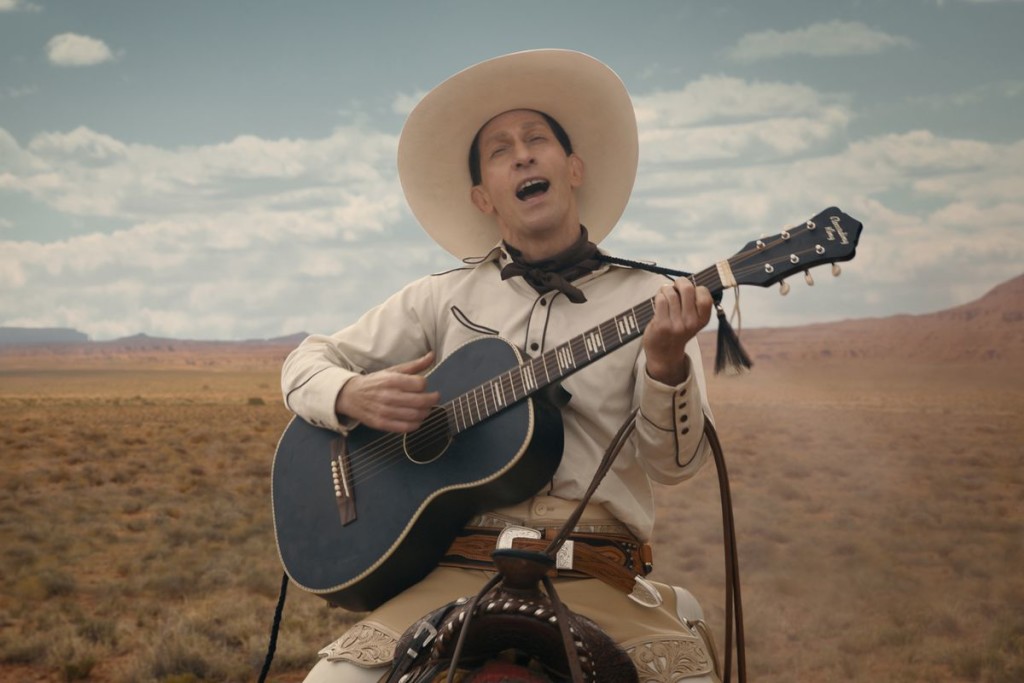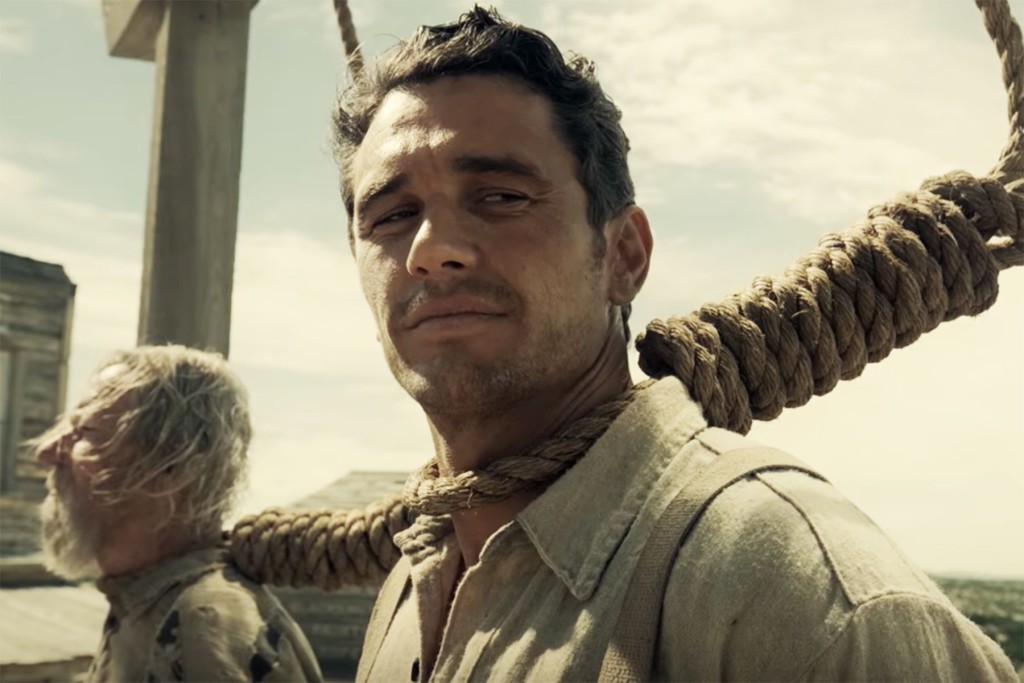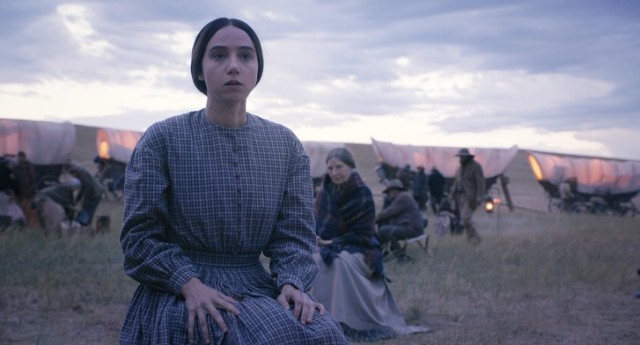The Coens remind us why they’re two of the best screenwriters of all time.
Genre: Drama/Western/Dark Comedy
Premise: (from IMDB) An anthology film comprised of six stories, each dealing with a different aspect of life in the Old West.
About: It’s been eight years since the Coen Brothers’ last hit (True Grit). Since then they’ve hit us with the hard to like Llewyn Davis, then cast George Clooney at his most muggiest to give us the messy waste of time, Hail Caesar. Perhaps the Coens knew they needed to stretch their creative muscles and try something new. Which is why they went to Netflix. Streaming didn’t require anything resembling a three-act structure, and they went all in with that freedom, giving us six short vignettes as opposed to one giant movie.
Writers: Joel and Ethan Coen
Details: 2 hrs and 12 minutes
It isn’t a stretch to say that while the Coens are technically living in the year 2018, spiritually they’re living in, like, 1870 or something. So it’s apropos that their latest film is set in the Old West. I have to admit, I’ve lost a lot of faith in the Coens recently. I thought Llewyn Davis was one of the most miserable characters ever conceived. If the U.S. military ever wants to build a weapon that injects depression into its target, all they need to do is show their enemies that film. But with today’s review, I’m happy to say that the Coens aren’t just back. They’re back with a vengeance.
The Ballad of Buster Scruggs isn’t a single narrative. It’s six separate narratives, all set in the same universe of the Old West. The first follows Buster, an oddball outlaw who enjoys talking directly to the audience, using his impressive shooting skills to dust his adversaries, then joyfully singing about it. We watch Buster kill a couple of local tough guys before finally meeting his equal. Will this man, who is also strong with song, be the end of Buster?
The second vignette is Cowboy James Franco robbing a bank. After failing to do so, he’s strung up to a tree to be hung by the local sheriff. But when Comanches come galloping in and kill the sheriff and his gang, Cowboy James Franco is left at his horse’s mercy. Should the horse move too far from the tree, James will fall from the saddle and choke to death.
Vignette three follows a broken down drunk played by Liam Neeson who makes his living wheeling around a performer with no arms or legs. The performer recites high-brow material, such as poems about Cain and Abel, and while at first, he kills it, every city they visit, his audience gets smaller and smaller. Liam Neeson realizes he has to find a new act if he’s going to survive. But then what to do with the performer, who’s completely dependent on him?
The fourth film follows an old failed prospector who finds a stream in a picturesque valley. He sets up shop and begins sifting for gold. Weeks go by until finally, shockingly, he finds it. He hops down into the hole he’s dug to get a closer look, only to be shot in the back by a cowboy who’d been watching him this whole time, waiting for him to do the work so he could could glide in and collect the gold effort free. But maybe our prospector is more resilient than we first thought.
The fifth film introduces us to Alice, who’s to be married to a friend of her brother’s in Oregon. The siblings lead a caravan down the Oregon Trail, but, on the way, her brother dies. After burying him, we learn that Alice’s brother made an arrangement with the caravan’s leader to pay him $400 for the job. The only problem is that Alice can’t find the money. As each day passes, she dreads confessing to the man that he’s doing all of this for nothing.
The final film follows a group of five people in a stage coach that is carrying a mysterious dead body on its roof. The five pontificate about life, interjecting the conversation with the occasional song. Eventually, we learn that the owners of the stage coach are bounty hunters.
Look, I get it. Sitting down to watch a Coen Brothers film isn’t like sitting down to watch a Marvel movie, a horror flick, or even a biopic. It requires a certain level of mental commitment that can be agitating in this day and age. You have to put yourself in a state of – gasp – concentration. Some people don’t want to do that. And that’s okay. I’m the same way with movies like Call Me By Your Name and Ladybird. I know I’m going to have to invest in some boredom at first to ultimately appreciate something that, hopefully, affects me on a deeper level.
But, man. If you pass this one up, you’re missing out on something special. This is the Coens bringing their A-Game. You’re watching something you can’t get anywhere else. In a medium that’s been so oversaturated, nobody bats an eye when franchises get remade five short years later, it’s amazing to witness true originality.
Which is ironic because it’s this very originality that makes it so difficult to learn anything from “Ballad.” I mean, it’s not a feature. So there are no screenwriting lessons about feature-length structure. It’s not a TV show, so you can’t explore it as a series of episodes. We’re talking about six short films. What the hell do we learn from that?
I suppose one lesson is the “Aftermath” narrative. The most popular narrative structure in storytelling is the Goal-Driven narrative. And we actually have that here in the fourth film, where the old man is digging for gold. Finding the gold is the goal. But the Coens like to work with the “aftermath” of a goal – what happens after our hero succeeds or fails at his goal. You see this in the second film, when Cowboy James Franco’s goal is to rob the bank. He attempts to rob the bank, fails, and is then sentenced to be hung. The rest of the film focuses on the aftermath of his failure.
You can look at Fargo as an “Aftermath” narrative as well. The goal is for a husband to fake his wife’s kidnapping in order to con her rich father out of a bunch of money. The wife is accidentally killed during the “fake” kidnapping and the rest of the movie is the aftermath of this error.
The cool thing about the Aftermath narrative is that you can start it anywhere you want. For example, the first 60% of the movie can be the goal. And the final 40% can be the aftermath. The reason you would do this is to keep the audience guessing. Most movies deal with their goal during the climax. So if your characters accomplish the goal before that, the audience has no idea what’s coming next, which is exciting. A recent example of this is the script “Triple Frontier.” If I remember correctly, the first 65% of the narrative is goal-driven: Steal the money from the drug dealers. The final 35% is the aftermath, which is trying to get 300 million dollars from deep South America into the U.S.
Perhaps the most surprising thing about this anthology is that the short I was most bored by initially ended up being my favorite. That would be the Liam Neeson one. The first half of the short kept hitting the same beat, with the performer reciting his poems over and over again, which would end with Neeson packing up and moving to the next city. There didn’t seem to be any point to it.
But as the audiences began to shrink, I realized we were heading towards an impasse. Neeson was going to have to figure out what to do with this guy. It then occurred to me that while the story itself had been repetitive and boring, the Coens had sneakily been developing the characters in the background (The performer couldn’t go to the bathroom without Neeson’s help – that’s how close their relationship was). So by the time Neeson finally has to make his decision, it’s devastating. Is he really going to do this to this man we’ve fallen in love with? I was shocked at just how much I cared about the answer. And I loved how the Coens showed the final action. It was something only they could’ve thought up.
I don’t know why we haven’t seen anything good from these two this decade. But I’m willing to forgive their missteps, because The Ballad of Buster Scruggs is freaking fantastic. Probably the best thing you’ll find on Netflix. At the very least, check out the fifth story, “The Gal Who Got Rattled.” It has a killer ending. This better win some Oscars.
[ ] What the hell did I just watch?
[ ] wasn’t for me
[ ] worth the stream
[x] impressive
[ ] genius
What I learned: While the Coens make some exotic writing choices from time to time (fourth-wall breaking singing cowboys who are the polar opposite of the cowboy stereotype), they often use very simple storytelling devices. If you look at the fourth vignette, “All Gold Canyon,” that story has two devices – a goal (find gold) and an obstacle (a man shoots him once he finds the gold). Sometimes, that’s all you need, a goal and an obstacle.




